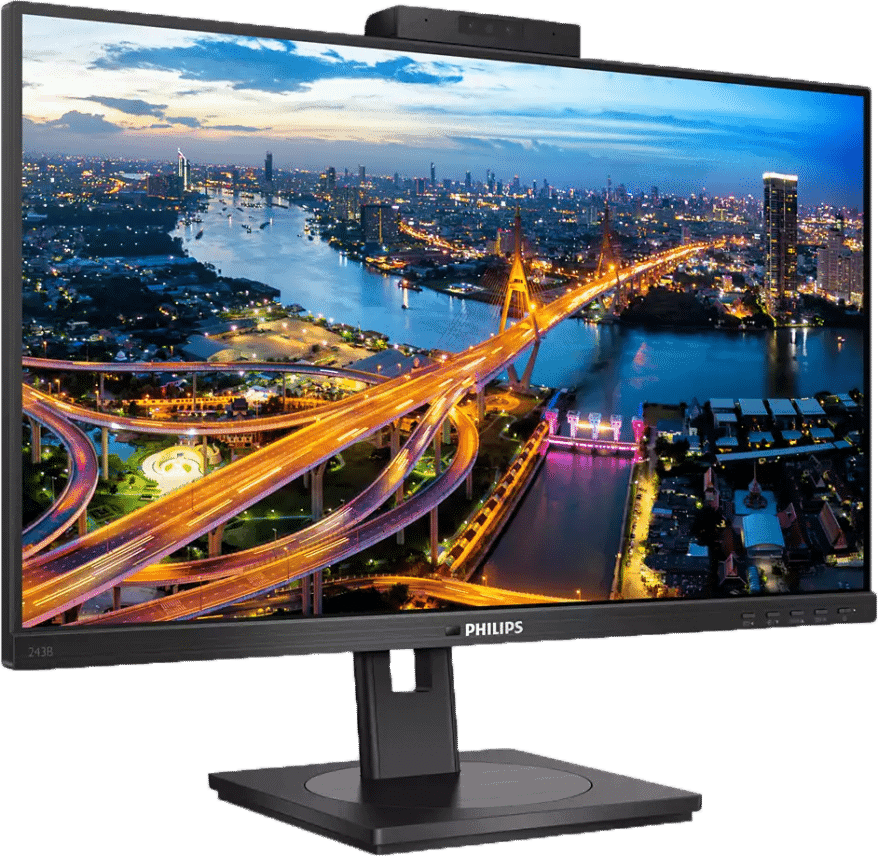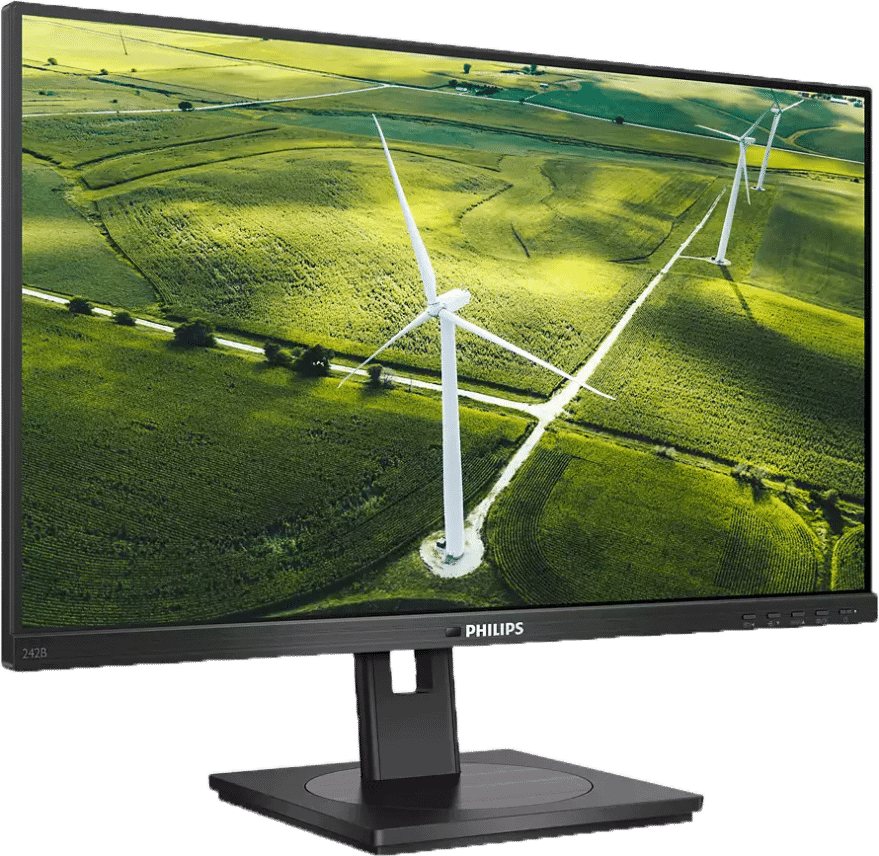Philips has expanded its Monitors B Line with two new monitors. The Philips 243B1JH has a built-in USB dock, and the 242B1G is built to consume as little power as possible.
Both models are 1080p monitors with a screen diagonal of 24 inches. The 243B1JH stands out with its built-in USB dock. Users can connect the monitor to a computer with a single USB-C cable, exchanging power, image and connectivity.

The monitor itself has a couple of USB ports to connect peripherals, along with an RJ45 connector for internet connection and a DisplayPort output for daisy-chaining multiple monitors. The monitor can send 100 watts of power to the laptop, so users can easily connect all peripherals and power to their laptops with one cable.
Philips has also built a webcam into the 243B1JH. This is a pop-up webcam with support for Windows Hello. The panel of the monitor appears to be nothing out of the ordinary. It is a fairly average IPS panel with a contrast ratio of 1000:1 and a maximum brightness of 250 nits. Philips claims that the monitor can display 88 percent of the NTSC and 105 percent of the sRGB colour range.
Sustainable monitor doesn’t seem all that special
The Philips 242B1G appears to be more focused on sustainability. According to Philips, the monitor is made of 85 percent recycled plastic, and the use of harmful substances has been minimised. The monitor is also equipped with all kinds of techniques to save power, such as a sensor that adjusts the brightness based on the brightness of the environment. This sensor is also present in the P243B1JH. Another improvement is a power button that completely cuts off power to the monitor.

In practice, however, the savings in power consumption turn out to be less substantial than Philips makes it out to be. Philips praises its power consumption, but the actual figures are hidden deep within the technical specifications. There, the monitor appears to use between 8 and 13 watts during operation. That’s not much, but also not very impressive compared to the 13 to 15 watts that the P243B1JH uses.
The display can handle a maximum refresh rate of 75Hz, and achieves a maximum contrast ratio of 1000:1 and brightness of 250 nits. It can display 78 percent of the NTSC and 102 percent of the sRGB colour gamut.
Both monitors are available immediately. The 243B1JH has a suggested retail price of 409 euros and the 242B1G should cost 209 euros.
Tip: Dell introduces monitor with emphasis on video conferencing